 About a year ago, out of curiosity I decided to go back through some old comic books and try to figure out who the earliest black hero I could find was. It turned out to be T’Challa, the Blank Panther back in one of my 1968 Captain America’s. I realized that Black characters in comics have had quite a history and I decided to get a few books that explored it so I bought Fredrik Stromberg’s “Black Images In The Comics” and was instantly blown away.
About a year ago, out of curiosity I decided to go back through some old comic books and try to figure out who the earliest black hero I could find was. It turned out to be T’Challa, the Blank Panther back in one of my 1968 Captain America’s. I realized that Black characters in comics have had quite a history and I decided to get a few books that explored it so I bought Fredrik Stromberg’s “Black Images In The Comics” and was instantly blown away. Stromborg’s book not only showed images from American publications but one’s from all over the world, especially Europe. Lifestyle and humor magazines regularly used Black people and Africans as fodder for humor and sight gags, often by giving them extremely dark skin, kinky hair with bones in it or huge nose rings. The Africans often brandished spears and Blacks were always dancing, eating chicken or watermelon, and depicted as being lazy or possessing inferior intellect (like the ability to speak anything resembling proper English) but exhibited great skill at dancing, sports or playing music (go figure!).
Stromborg’s book not only showed images from American publications but one’s from all over the world, especially Europe. Lifestyle and humor magazines regularly used Black people and Africans as fodder for humor and sight gags, often by giving them extremely dark skin, kinky hair with bones in it or huge nose rings. The Africans often brandished spears and Blacks were always dancing, eating chicken or watermelon, and depicted as being lazy or possessing inferior intellect (like the ability to speak anything resembling proper English) but exhibited great skill at dancing, sports or playing music (go figure!). At the turn of the century, several magazines like Puck and Judge hired cartoonists to do humor pages or caricatures of a political nature in their pages (the above one ran in Puck in 1890). One of the foremost cartoonists of the era was a man named R.F. Outcault who would become known as the “father of the modern comic strip”. We will begin with him and his creation of “The Yellow Kid” in 1895, a jug eared Irish kid from the fictional New York slum called Hogan’s Alley.
At the turn of the century, several magazines like Puck and Judge hired cartoonists to do humor pages or caricatures of a political nature in their pages (the above one ran in Puck in 1890). One of the foremost cartoonists of the era was a man named R.F. Outcault who would become known as the “father of the modern comic strip”. We will begin with him and his creation of “The Yellow Kid” in 1895, a jug eared Irish kid from the fictional New York slum called Hogan’s Alley. Among the denizens of Hogan’s Alley were Black kids that of course were portrayed as big lipped, dark skinned wide eyed terrors, foremost being the razor wielding New Bully. It turns out that Outcault would create the very first comic strip featuring a Black main character in 1900. That is where we begin our journey through comics history:
Among the denizens of Hogan’s Alley were Black kids that of course were portrayed as big lipped, dark skinned wide eyed terrors, foremost being the razor wielding New Bully. It turns out that Outcault would create the very first comic strip featuring a Black main character in 1900. That is where we begin our journey through comics history:1900
 R.F. Outcault creates “Pore Lil’ Mose”, a strip about a Black child in New York City that lives in a section known as Coon Town. He usually travels with a pack of animal friends/pets and gets into all kinds of hijinks in his travels (at least he was literate). I have included a Mose strip below from it’s brief run from 1900-1902. R.F. Outcault then went on to create the ultra popular Buster Brown strip and got rich by licensing his likeness to a shoe company.
R.F. Outcault creates “Pore Lil’ Mose”, a strip about a Black child in New York City that lives in a section known as Coon Town. He usually travels with a pack of animal friends/pets and gets into all kinds of hijinks in his travels (at least he was literate). I have included a Mose strip below from it’s brief run from 1900-1902. R.F. Outcault then went on to create the ultra popular Buster Brown strip and got rich by licensing his likeness to a shoe company.
1902
 George Herriman, yet another prominent cartoonist of the turn of the century creates a strip about a Black musician named “Musical Mose”. Mose can play any instrument and any kind of music...problem is that he’s Black and everyone hates Negroes (including other Negroes). Mose dresses himself up as other nationalities and ultimately gets discovered, beaten and run out of the venue/town strip after strip. The joke got old pretty quickly and it was even odder because Herriman himself was a Black man from New Orleans passing for White. The strip had a short life but Herriman went on to create the highly influential “Krazy Kat” and inspired generations of cartoonists to come.
George Herriman, yet another prominent cartoonist of the turn of the century creates a strip about a Black musician named “Musical Mose”. Mose can play any instrument and any kind of music...problem is that he’s Black and everyone hates Negroes (including other Negroes). Mose dresses himself up as other nationalities and ultimately gets discovered, beaten and run out of the venue/town strip after strip. The joke got old pretty quickly and it was even odder because Herriman himself was a Black man from New Orleans passing for White. The strip had a short life but Herriman went on to create the highly influential “Krazy Kat” and inspired generations of cartoonists to come.1905
 Yet another of the greats of the early days of modern day comic strips, William Marriner created a comic strip with a Black main character. It was called “Sambo And His Funny Noises” and it was all about the adventures of Sammie “Sambo” Johnsin (spelled wrong purposely) and his back and forth dealings with two little white boys in his neighborhood named Mike and Jim. Sambo often won when he bumped heads with them (as he did in the below panel) and that was new for a Black character in that era.
Yet another of the greats of the early days of modern day comic strips, William Marriner created a comic strip with a Black main character. It was called “Sambo And His Funny Noises” and it was all about the adventures of Sammie “Sambo” Johnsin (spelled wrong purposely) and his back and forth dealings with two little white boys in his neighborhood named Mike and Jim. Sambo often won when he bumped heads with them (as he did in the below panel) and that was new for a Black character in that era. The strip would’ve survived for at least ten years but Marriner was an alcoholic and in 1914 he died in a fire that he reportedly started because his wife had once again packed up and left him with his child while he was off on one of his binges. The last thing he was heard saying was him threatening the townsfolk that if his wife didn’t come back soon, he would burn down the entire town and everyone in it.
The strip would’ve survived for at least ten years but Marriner was an alcoholic and in 1914 he died in a fire that he reportedly started because his wife had once again packed up and left him with his child while he was off on one of his binges. The last thing he was heard saying was him threatening the townsfolk that if his wife didn’t come back soon, he would burn down the entire town and everyone in it.1916
In 1916, Sammie Johnsin became the first comic strip character to be produced in a series of cartoon shorts by Otto Messner and Pat Sullivan’s animation studio. Sammie Johnsin (since Marriner was dead they couldn’t get the rights to call him Sambo) served as the blueprint for Felix The Cat cartoons that soon followed. They even were featured in the same shorts together, these prints are all rare and in poor shape as seen below in the restored Felix The Cat film (which are now all public domain!).
1923

Two more Black characters make their first appearances in two popular comic strips of the Roaring 20’s. The first being Rachel, a maid/servant in Frank King’s “Gasoline Alley” and Mushmouth, a manservant/chauffeur in Frank Willard’s “Moon Mullins”. Rachel looked like the typical mammy stereotype and Mushmouth was a typical ignorant Negro that wasn’t very bright and lived to wait on people. Neither could speak English well, either (which should be obvious in Mushmouth’s case).
 Weirder still was that in these comic strips, no one was well off (Moon Mullins was a drunk) but the Black folks were still servants to other broke people. I couldn’t find any comic strip depictions of them online except for these 1920’s collectibles in a private collection.
Weirder still was that in these comic strips, no one was well off (Moon Mullins was a drunk) but the Black folks were still servants to other broke people. I couldn’t find any comic strip depictions of them online except for these 1920’s collectibles in a private collection.1925
 In the Baltimore Sun newspapers Comic section, cartoonist Ken Kling ran a strip about horse racing that features tips on the day’s races. It didn’t take off until he added a Black character in it, though. The strip was renamed “Joe And Asbestos” (guess which one Asbestos was?) and Asbestos served as a helper in the stables and took care of Joe’s horses.
In the Baltimore Sun newspapers Comic section, cartoonist Ken Kling ran a strip about horse racing that features tips on the day’s races. It didn’t take off until he added a Black character in it, though. The strip was renamed “Joe And Asbestos” (guess which one Asbestos was?) and Asbestos served as a helper in the stables and took care of Joe’s horses. The strip was famous because Kling would drop hints all over the strip and people would buy the paper and bet the ponies based on his daily tips (hence the missing text in the featured strip). Kling also had a side hustle going by selling horse racing guides and betting forms.
The strip was famous because Kling would drop hints all over the strip and people would buy the paper and bet the ponies based on his daily tips (hence the missing text in the featured strip). Kling also had a side hustle going by selling horse racing guides and betting forms.1929
 Rudolf Ising and Hugh Harman created Bosko, Bosko and his girlfriend Honey became the first Looney Tunes characters to appear in both cartoons and print. The first Bosko sketches depict him as a deracialized Black character but in his first movies he sounded like a stereotypical coon that was aversed to dancing and playing music. Later on, he and Honey sounded like squeaky voiced children for amore than 30 produced Looney Tunes shorts between 1929 and 1933.
Rudolf Ising and Hugh Harman created Bosko, Bosko and his girlfriend Honey became the first Looney Tunes characters to appear in both cartoons and print. The first Bosko sketches depict him as a deracialized Black character but in his first movies he sounded like a stereotypical coon that was aversed to dancing and playing music. Later on, he and Honey sounded like squeaky voiced children for amore than 30 produced Looney Tunes shorts between 1929 and 1933. In 1934, Harman and Ising switched over to MGM Studios and took Bosko and Honey with them...the only difference is that now Bosko and Honey were both Black children with stereotypical features that spoke in English that wasn’t just broken, it had compound fractures. This version of Bosko and Honey appeared sporadically in MGM’s Happy Harmonies features between 1934-1938. What the fuck? The odd thing is that Bosko and Honey were resurrected by the cartoon Tiny Toons Adventures in the early 90’s and Bosko and Honey’s sordid history was completely glossed over.
In 1934, Harman and Ising switched over to MGM Studios and took Bosko and Honey with them...the only difference is that now Bosko and Honey were both Black children with stereotypical features that spoke in English that wasn’t just broken, it had compound fractures. This version of Bosko and Honey appeared sporadically in MGM’s Happy Harmonies features between 1934-1938. What the fuck? The odd thing is that Bosko and Honey were resurrected by the cartoon Tiny Toons Adventures in the early 90’s and Bosko and Honey’s sordid history was completely glossed over.1934
 Lee Falk and Phil Davis launch the new strip “Mandrake The Magician”. Mandrake was an illusionist and he could read thoughts. He was aided by Lothar, a massive African with charcoal skin, beady little eyes and huge lips. Lothar was very docile, rarely spoke and when he did it was in horribly constructed sentences and he wore a short tunic topped by a piece of leopard skin across his torso and a red fez on his head. Lothar was not only Mandrake’s manservant but he would drive him around and be his security/protector/hired muscle. Lothar was later referred to as the “strongest man on Earth” as well which could make him the first legitimate Black superhero in comics history.
Lee Falk and Phil Davis launch the new strip “Mandrake The Magician”. Mandrake was an illusionist and he could read thoughts. He was aided by Lothar, a massive African with charcoal skin, beady little eyes and huge lips. Lothar was very docile, rarely spoke and when he did it was in horribly constructed sentences and he wore a short tunic topped by a piece of leopard skin across his torso and a red fez on his head. Lothar was not only Mandrake’s manservant but he would drive him around and be his security/protector/hired muscle. Lothar was later referred to as the “strongest man on Earth” as well which could make him the first legitimate Black superhero in comics history. Eventually, it would be revealed that Lothar was a prince of an African nation. He learned to speak excellent English, took on actual human features and stopped being Mandrake’s dumb as a post servant and they became crime fighting equals. He also became one of the Defenders Of The Earth in the 1980’s animated series featuring other famous King Features Syndicate characters, receiving equal hero billing next to Flash Gordon, The Phantom and Mandrake The Magician.
Eventually, it would be revealed that Lothar was a prince of an African nation. He learned to speak excellent English, took on actual human features and stopped being Mandrake’s dumb as a post servant and they became crime fighting equals. He also became one of the Defenders Of The Earth in the 1980’s animated series featuring other famous King Features Syndicate characters, receiving equal hero billing next to Flash Gordon, The Phantom and Mandrake The Magician.1937
 Jackie Ormes became the first Black female cartoonist to have a syndicated strip when her creation “Torchy Brown” was published throughout Black newspapers by way of the Afro American Continental Features Syndicate via the Pittsburgh Courier. Torchy was a bright, independent Black woman in a world of Black professionals that looked like human beings and spoke like them as well (about damn time!).
Jackie Ormes became the first Black female cartoonist to have a syndicated strip when her creation “Torchy Brown” was published throughout Black newspapers by way of the Afro American Continental Features Syndicate via the Pittsburgh Courier. Torchy was a bright, independent Black woman in a world of Black professionals that looked like human beings and spoke like them as well (about damn time!). “Torchy Brown” had a brief run and a second run in the early 50’s where she worked in a medical setting.
“Torchy Brown” had a brief run and a second run in the early 50’s where she worked in a medical setting. Jackie Ormes also became the first Black woman to sucessfully license a Black character and have it made into the first Black doll that wasn’t a caricature or stereotype based on her “Patty Jo N' Ginger” strip in 1948.
Jackie Ormes also became the first Black woman to sucessfully license a Black character and have it made into the first Black doll that wasn’t a caricature or stereotype based on her “Patty Jo N' Ginger” strip in 1948.1939
 Walter Lantz creates a new character to appear in his animated films and Dell Comics’ New Funnies books (at the bottom, can't miss him). It’s a young Southern Black boy complete with all the required racist stereotypes (appearance, mannerisms, and speech) named Lil’ Eight Ball (no MJG). He lives down South on a farm with his mammy and a host of other characters.
Walter Lantz creates a new character to appear in his animated films and Dell Comics’ New Funnies books (at the bottom, can't miss him). It’s a young Southern Black boy complete with all the required racist stereotypes (appearance, mannerisms, and speech) named Lil’ Eight Ball (no MJG). He lives down South on a farm with his mammy and a host of other characters.
 Above are some stills from an old animated feature and he didn’t appear in animated form or print past 1947. While no company is advertising selling any DVD’s containing episodes of “Lil Eight Ball”, I did find one company that sells old Lantz cartoons on DVD sneaking them in without advertising them on the customer reactions on one site. You won’t be seeing him on YouTube!
Above are some stills from an old animated feature and he didn’t appear in animated form or print past 1947. While no company is advertising selling any DVD’s containing episodes of “Lil Eight Ball”, I did find one company that sells old Lantz cartoons on DVD sneaking them in without advertising them on the customer reactions on one site. You won’t be seeing him on YouTube! Warner Brothers introduced Inki, the stereotypical African hunter in a series commonly called “Inki And The Minah Bird”. Inki appeared to be a child and he was depicted with and without a bone through his hair in alternate cartoons. Inki was only featured in five shorts and his final cartoon was produced in 1950. Inki was shown on television until the early 1990’s before many cartoons were removed from the air and/or edited for having offensive or racially insensitive content.
Warner Brothers introduced Inki, the stereotypical African hunter in a series commonly called “Inki And The Minah Bird”. Inki appeared to be a child and he was depicted with and without a bone through his hair in alternate cartoons. Inki was only featured in five shorts and his final cartoon was produced in 1950. Inki was shown on television until the early 1990’s before many cartoons were removed from the air and/or edited for having offensive or racially insensitive content.1940
 The legendary comic book artist Will Eisner created the Golden Age hero “The Spirit” and gave him a young Black sidekick with (you guessed it!) huge lips, huge eyes, an inability to speak proper English and a need to perform menial tasks for the White hero. His name? Ebony White. Ebony spent quite a bit of time getting captured, knocked out, tied up and used as bait to lure The Spirit into traps. In some rare cases, he actually helped apprehend several villains but those instances were far and few between. The introduction of Ebony White opened the floodgates and soon other comics would introduce Black sidekicks.
The legendary comic book artist Will Eisner created the Golden Age hero “The Spirit” and gave him a young Black sidekick with (you guessed it!) huge lips, huge eyes, an inability to speak proper English and a need to perform menial tasks for the White hero. His name? Ebony White. Ebony spent quite a bit of time getting captured, knocked out, tied up and used as bait to lure The Spirit into traps. In some rare cases, he actually helped apprehend several villains but those instances were far and few between. The introduction of Ebony White opened the floodgates and soon other comics would introduce Black sidekicks.In later years, Eisner changed Ebony’s appearance, speech patterns and his demeanor upon returning from serving in World War 2 with Black soldiers in the yet to be integrated Army. In the upcoming “The Spirit” feature film the character of Ebony White has been omitted altogether rather than being cast by a young Black actor. Bad move.
1941
 The early incarnation of Marvel Comics produced a new World War 2 comic book featuring a kid gang called “Young Allies”. Among them was a bug eyed, balloon lipped Black teen dressed in loud clothes that gave him a “zip coonish” appearance named (wait for it!) Whitewash Jones. Whitewash ran around with a group of teens that included Toro, the sidekick of The Human Torch and Bucky, sidekick of Captain America.
The early incarnation of Marvel Comics produced a new World War 2 comic book featuring a kid gang called “Young Allies”. Among them was a bug eyed, balloon lipped Black teen dressed in loud clothes that gave him a “zip coonish” appearance named (wait for it!) Whitewash Jones. Whitewash ran around with a group of teens that included Toro, the sidekick of The Human Torch and Bucky, sidekick of Captain America. The rest of the team usually ended up getting knocked unconscious or captured just to be saved by the super powered members of the group (and in some cases Captain America, Human Torch or Sub Mariner). Whitewash was often featured on the cover of most issues in a sight gag or tied up somewhere. In rare occasions, he actually helped bring down the villains.
The rest of the team usually ended up getting knocked unconscious or captured just to be saved by the super powered members of the group (and in some cases Captain America, Human Torch or Sub Mariner). Whitewash was often featured on the cover of most issues in a sight gag or tied up somewhere. In rare occasions, he actually helped bring down the villains.
 Not to be outdone, Fawcett Comics (who created Capt. Marvel AKA Shazam) decided to introduce their Black sidekick, Steamboat to the comic book audience. He was an out of work boat captain (thanks to Capt. Marvel) and his alter ego Billy Batson gave him a job where he worked and Steamboat also served as his sidekick/manservant/chauffeur/pilot (which made no sense because Capt. Marvel could fly). In the end, Blacks protested and demanded that the character of Steamboat be discontinued because he was offensive. He was soon removed from the pages of Fawcett’s books and only lives on in pictures like the one above.
Not to be outdone, Fawcett Comics (who created Capt. Marvel AKA Shazam) decided to introduce their Black sidekick, Steamboat to the comic book audience. He was an out of work boat captain (thanks to Capt. Marvel) and his alter ego Billy Batson gave him a job where he worked and Steamboat also served as his sidekick/manservant/chauffeur/pilot (which made no sense because Capt. Marvel could fly). In the end, Blacks protested and demanded that the character of Steamboat be discontinued because he was offensive. He was soon removed from the pages of Fawcett’s books and only lives on in pictures like the one above.1943
 Walt Kelly, most famous for his comic strip “Pogo”was drawing and penning adventures for Pogo Possum and Albert The Alligator for years before he started the daily strip in 1948. He introduced a little Black kid to interact with the animals in Okefenokee Swamp named Bumbazine. His first appearance was in a segment called “Bumbazine And Albert The Alligator”. Bumbazine was a first in many ways, he spoke better English then all of the animals in the swamp and he didn’t have any overtly racist features that most Black cartoon characters had at the time.
Walt Kelly, most famous for his comic strip “Pogo”was drawing and penning adventures for Pogo Possum and Albert The Alligator for years before he started the daily strip in 1948. He introduced a little Black kid to interact with the animals in Okefenokee Swamp named Bumbazine. His first appearance was in a segment called “Bumbazine And Albert The Alligator”. Bumbazine was a first in many ways, he spoke better English then all of the animals in the swamp and he didn’t have any overtly racist features that most Black cartoon characters had at the time. Bumbazine appeared in various editions of Our Gang Comics (that's a cartoon version of Buckwheat) and Animal Comics. Walt Kelly didn’t use Bumbazine that long, instead opting to have the critters themselves do the talking without any human involvement. Thank you, Walt Kelly for being a human being.
Bumbazine appeared in various editions of Our Gang Comics (that's a cartoon version of Buckwheat) and Animal Comics. Walt Kelly didn’t use Bumbazine that long, instead opting to have the critters themselves do the talking without any human involvement. Thank you, Walt Kelly for being a human being.1945
 Fawcett Comics needed to give Capt. Marvel a villain to fight after World War 2 ended. The answer was to create an evil version of Captain Marvel himself. When Capt. Marvel showed up from Egypt, he adopted the alter ego of Billy Batson and appeared as a Caucasian. However, when Teth Adam said “Shazam!” and showed up in the very same timeline he was still a Middle Easterner...and evil. His name? Black Adam. Duh! He’s now considered one of the most powerful villains in the DC Universe. In the upcoming “Shazam” film, Black Adam will be played by Dwayne “The Rock” Johnson.
Fawcett Comics needed to give Capt. Marvel a villain to fight after World War 2 ended. The answer was to create an evil version of Captain Marvel himself. When Capt. Marvel showed up from Egypt, he adopted the alter ego of Billy Batson and appeared as a Caucasian. However, when Teth Adam said “Shazam!” and showed up in the very same timeline he was still a Middle Easterner...and evil. His name? Black Adam. Duh! He’s now considered one of the most powerful villains in the DC Universe. In the upcoming “Shazam” film, Black Adam will be played by Dwayne “The Rock” Johnson.
1947
 For the first time ever, an independent comic book was printed by Black people for Black people (take that FUBU!). It was called “All-Negro Comics” and it introduced the first two independent Black heroes, Ace Harlem and Lion Man.
For the first time ever, an independent comic book was printed by Black people for Black people (take that FUBU!). It was called “All-Negro Comics” and it introduced the first two independent Black heroes, Ace Harlem and Lion Man.
 Ace Harlem was a private detective and Lion Man was a super strong and super quick member of the Zulu tribe in Africa.They both are fairly intelligent and look like actual humans do for a change (cuz they were drawn and scripted by actual Black folks!). Unfortunately, this was the only issue ever produced and it is extremely rare even among collectors.
Ace Harlem was a private detective and Lion Man was a super strong and super quick member of the Zulu tribe in Africa.They both are fairly intelligent and look like actual humans do for a change (cuz they were drawn and scripted by actual Black folks!). Unfortunately, this was the only issue ever produced and it is extremely rare even among collectors.1954
 The predecessor of Marvel Comics, Atlas used to produce a title called “Jungle Tales”. Contained within these pages was the story of Waku, Prince Of The Bantu. He was depicted as having a realistic human appearance and was very intelligent. He was also portrayed as being incredibly heroic and possessed an air of dignity not previously seen in Black characters in mainstream comics.
The predecessor of Marvel Comics, Atlas used to produce a title called “Jungle Tales”. Contained within these pages was the story of Waku, Prince Of The Bantu. He was depicted as having a realistic human appearance and was very intelligent. He was also portrayed as being incredibly heroic and possessed an air of dignity not previously seen in Black characters in mainstream comics. In a way, Waku is the first Black hero in Marvel Comics history...of course, it was easy to treat Waku in this manner considering he was an African in Africa and not one in America among Whites.
In a way, Waku is the first Black hero in Marvel Comics history...of course, it was easy to treat Waku in this manner considering he was an African in Africa and not one in America among Whites.1959
 The DC comic book “Our Army At War” began running the tales of Sgt. Rock and Easy Company. Among the many members of Easy Company was a Black soldier named Jackie Johnson. Jackie was the former heavyweight boxing champion of the world and he ended up in Easy Company during WW2 after losing his title (Jackie Johnson was supposedly an amalgamation of Jack Johnson and Joe Louis).
The DC comic book “Our Army At War” began running the tales of Sgt. Rock and Easy Company. Among the many members of Easy Company was a Black soldier named Jackie Johnson. Jackie was the former heavyweight boxing champion of the world and he ended up in Easy Company during WW2 after losing his title (Jackie Johnson was supposedly an amalgamation of Jack Johnson and Joe Louis). Jackie’s three most famous features occured in issues #113, #120 and most famously in #160 where he got to fight the man who took his championship from him again while captured by the Germans. Jackie ended up becoming an action figure in later years and the inspiration for the following character.
Jackie’s three most famous features occured in issues #113, #120 and most famously in #160 where he got to fight the man who took his championship from him again while captured by the Germans. Jackie ended up becoming an action figure in later years and the inspiration for the following character.1963
 Marvel Comics introduces a new title as an answer to DC’s war comics called “Sgt. Fury & His Howling Commandos”. One of the Howlin’ Commandos is a Black soldier and former Jazz musician named Gabe Jones who leads the charge by blowing his ever present horn. A fierce fighter that inspired his fellow Commandos onto victory in the field, Gabe was the first Black hero of the 60’s and he would become a key member of S.H.I.E.L.D during the Bronze Age.
Marvel Comics introduces a new title as an answer to DC’s war comics called “Sgt. Fury & His Howling Commandos”. One of the Howlin’ Commandos is a Black soldier and former Jazz musician named Gabe Jones who leads the charge by blowing his ever present horn. A fierce fighter that inspired his fellow Commandos onto victory in the field, Gabe was the first Black hero of the 60’s and he would become a key member of S.H.I.E.L.D during the Bronze Age.
1965
 Dell Comics prints the first comic book featuring a Black hero when the first issue of “Lobo” hit the stands. Lobo was a former slave who earned his freedom and then became a cowboy. He used his skills with a gun to fight injustice and right wrongs in the post Civil War Wild West while being a fugitive from the law. “Lobo” had been all but forgotten until recently when the title was discovered by comic book historians and collectors. This title was short lived but it was groundbreaking in so many ways it boggles the mind.
Dell Comics prints the first comic book featuring a Black hero when the first issue of “Lobo” hit the stands. Lobo was a former slave who earned his freedom and then became a cowboy. He used his skills with a gun to fight injustice and right wrongs in the post Civil War Wild West while being a fugitive from the law. “Lobo” had been all but forgotten until recently when the title was discovered by comic book historians and collectors. This title was short lived but it was groundbreaking in so many ways it boggles the mind. Veteran Black cartoonist Morrie Turner debuts his brand new comic strip called “Wee Pals”featuring a multicultural cast of youngsters that are all friends (imagine that!). With the help and advice of Dick Gregory and legendary cartoonist Charles Schultz he was able to get the strip syndicated. Turner’s other great triumph was that Rankin/Bass optioned his strip in 1972 and made it into the cartoon “Kid Power”. His Black characters were named Randy, Nipper, Diz, Mikki and Sybil and here they are below you animated. How bugged out is that?
Veteran Black cartoonist Morrie Turner debuts his brand new comic strip called “Wee Pals”featuring a multicultural cast of youngsters that are all friends (imagine that!). With the help and advice of Dick Gregory and legendary cartoonist Charles Schultz he was able to get the strip syndicated. Turner’s other great triumph was that Rankin/Bass optioned his strip in 1972 and made it into the cartoon “Kid Power”. His Black characters were named Randy, Nipper, Diz, Mikki and Sybil and here they are below you animated. How bugged out is that?1966
 The pages of Fantastic Four #52 not only contained some classic Marvel action, but they also heralded the beginning of an era as T’Challa, prince of Wakanda appeared for the first time as Black Panther, one of the greatest heroes in Marvel Comics history.
The pages of Fantastic Four #52 not only contained some classic Marvel action, but they also heralded the beginning of an era as T’Challa, prince of Wakanda appeared for the first time as Black Panther, one of the greatest heroes in Marvel Comics history. He would later become a member of the Avengers in Avengers #52 and star in his own series called “Jungle Action” (yikes!) before appearing in his own “Black Panther” titles in the 70’s (he also fought the Klu Klux Klan a lot). One day T’Challa would become King, but that is another story.
He would later become a member of the Avengers in Avengers #52 and star in his own series called “Jungle Action” (yikes!) before appearing in his own “Black Panther” titles in the 70’s (he also fought the Klu Klux Klan a lot). One day T’Challa would become King, but that is another story.

1967
 DC Comics decided to run an interesting story in "Justice League Of America" #57. The comics’ title was “Man, Thy Name Is-Brother!” and featured man of all races holding hands on the cover (Uh oh!). Inside, a young Black man named Joel Harper (that's him on the cover) saves a clothing manufacturer’s life and as a reward for saving the man’s life all Joel wants is a job. The boss gets robbed and Joel can’t stop them so he ends up getting fired.
DC Comics decided to run an interesting story in "Justice League Of America" #57. The comics’ title was “Man, Thy Name Is-Brother!” and featured man of all races holding hands on the cover (Uh oh!). Inside, a young Black man named Joel Harper (that's him on the cover) saves a clothing manufacturer’s life and as a reward for saving the man’s life all Joel wants is a job. The boss gets robbed and Joel can’t stop them so he ends up getting fired.Joel then encounters The Flash and tells him his story, including a solliliquy about how “colored boys never get a break”. He also confides in The Flash that he hoped this job would be his foot in the door to a career in the men’s clothing manufacturing business, something he’s been studying for a while now. What happens next is eye roll worthy.
The Flash ends up getting blinded and he encounters the thieves with Joel Harper serving as his sidekick/eyes. After Joel successfully yells out directions and aids The Flash in subduing the baddies. The Flash then suggests that Joel should go into law enforcement and become a cop. Wait a minute., didn’t Joel just tell you that he wanted to be a clothing manufacturer and run his own business? What’s with this “you should work with your hands” bullshit, Flash? Fuck you and Brotherhood Week!
 In other Black comic book character news, Black Manta made his first appearance in Aquaman #25. No one knew that Black Manta was a brother until he took of his helmet 10 years later. Comic book fans all over screamed “I knew it!” when they saw this panel below. Black Manta really hated Aquaman , too. He killed his kid, they had serious issues with each other.
In other Black comic book character news, Black Manta made his first appearance in Aquaman #25. No one knew that Black Manta was a brother until he took of his helmet 10 years later. Comic book fans all over screamed “I knew it!” when they saw this panel below. Black Manta really hated Aquaman , too. He killed his kid, they had serious issues with each other.
1968
 Charles “Sparky” Schultz, creator of “Peanuts” introduces Franklin to the world. Franklin was extremely well adjusted and he didn’t do anything crazy or overly “Black” to hammer home his presence in the strip. God bless you, Sparky for being human. Rest in Peace.
Charles “Sparky” Schultz, creator of “Peanuts” introduces Franklin to the world. Franklin was extremely well adjusted and he didn’t do anything crazy or overly “Black” to hammer home his presence in the strip. God bless you, Sparky for being human. Rest in Peace. John Saunders & Al McWilliams created the syndicated comic strip “Dateline: Danger” that was modeled after the TV show “I Spy” starring Bill Cosby and Robert Culp. In the strip, a White and Black man worked as secret agents but their cover was they were both news reporters. The Black character’s name was (wait for it!) Danny Raven. When the series ended in 1974, the team of Saunders & McWilliams created stories for spy/espionage comic books.
John Saunders & Al McWilliams created the syndicated comic strip “Dateline: Danger” that was modeled after the TV show “I Spy” starring Bill Cosby and Robert Culp. In the strip, a White and Black man worked as secret agents but their cover was they were both news reporters. The Black character’s name was (wait for it!) Danny Raven. When the series ended in 1974, the team of Saunders & McWilliams created stories for spy/espionage comic books.Next up: Part 2 1969-2008 or my arm falls of.
One.





































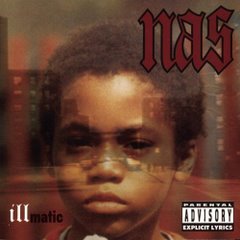









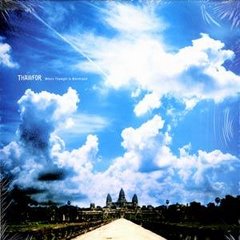
















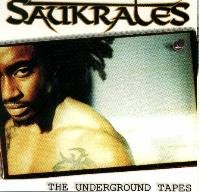






















































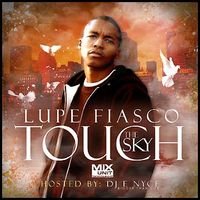








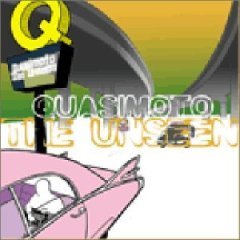






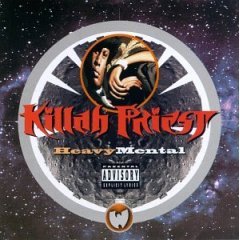












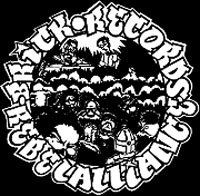


















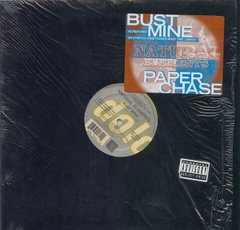

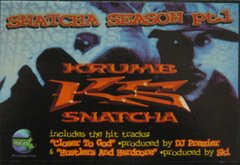








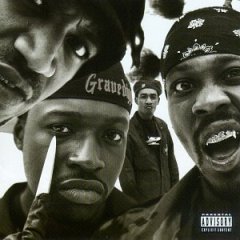










































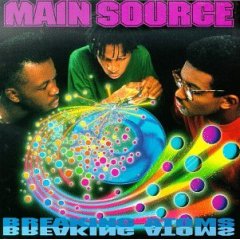






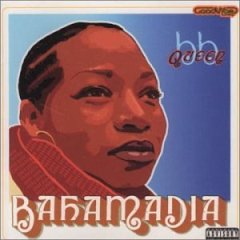























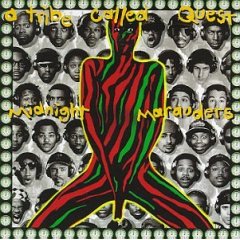












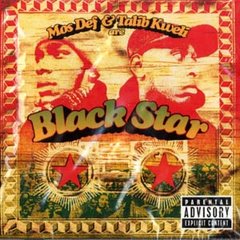














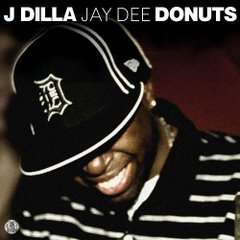





14 comments:
Excellent entry, fam.
I look forward to part 2.
wow man. you've outdone yourself. lotta work is going into these posts. thanks.
peace
Great post, Dart. Most blogs aren't very uh, researched or anything; so yeah, incredible job.
It's predictable that so many early comics would be total caricatures, but its interesting to see the few pre-68 comics that transcend or do a little more than stereo-typing. I'd love to get ahold of that 'All Negro Comics'!
Douglas Wolk's recent(ish) book 'Reading Comics' has some stuff to say about Will Eisner's Ebony White, that's worth reading, if only for a few minutes, next time you're in a bookstore-
Dart,
You are triumphant. This is one of the single greatest drops evar on the internets.
Fabulous stuff!
Cool post. I checked out Black Images in Comics a little while back.
I know Marvel/DC/Image is the cream of the crop, but I would have love to seen more the independent work that's out there.
You're serious with the posting! Good Work!
This is a truly great list man, thanks
Very informative, great post
Peace
Great history, only one correction.
Lobo was a soldier for the North in the Civil War. They don't really say what he was prior to that so it's *possible* that he's was slave but there is no mention one way or another.
Amazing post! Thanks PD. Looking forward to #2.
Yo Dart sick write up, i gotta to print this shit to read on the train. Don't Stop man!
You ever thought about expanding to with and RSS feed or Podcast? That would be sweet.
Man, You tell it.
Still as smart as ever.
One Love.
This a very, very good and detailed write up. Excellent research on the subject. I was trippin' while reading this because I remember seeing Looney Tunes late at night on TNT and catching some of the cartoons that depicted blacks as complete buffoons. I used to wonder, how and why they were airing it and then it stopped somewhere around '94 or '95. I guess enough people spoke up about it. The one I remember the most is Bugs Bunny dressing up in black face. Just wow.
ill_chemist
Post a Comment